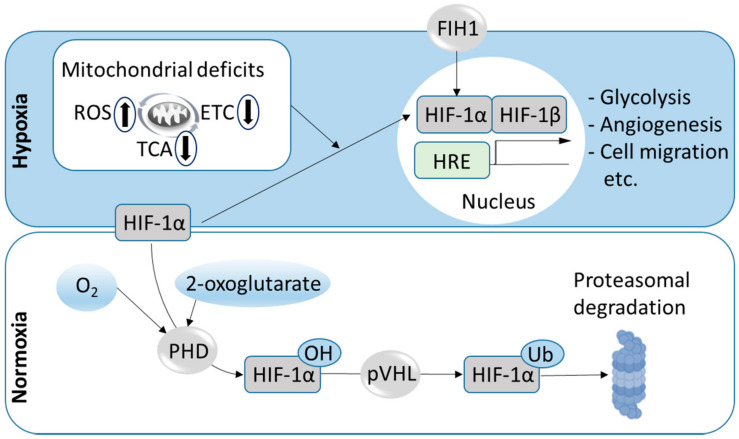Figure 2.
Simplified scheme of HIF-1 regulation. While in conditions of sufficient oxygen (O2) and 2-oxoglutarate availability, the α-subunit of hypoxia-inducible factor 1 (HIF-1) is constantly hydroxylated (OH) by prolyl hydroxylases (PHD), which enables recognition by van Hippel–Lindau (pVHL) proteins, ubiquitination (Ub) and proteasomal degradation, HIF-1 α is stabilized during hypoxia, translocates to the nucleus, forms dimers with HIF-1β and binds hypoxia-responsive elements (HREs), triggering transcriptional responses to hypoxia. HIF transactivation is further regulated by the factor inhibiting HIF-1 (FIH1) and consequences of hypoxia on mitochondrial functions, including interdependent effects on the tricarboxylic acid (TCA) cycle, electron transport system (ETS) and mitochondrial reactive oxygen species (ROS) production.

